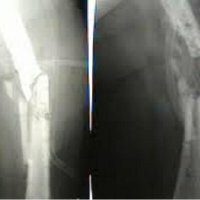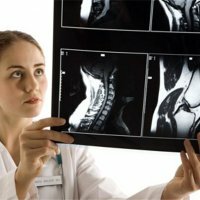Cervical osteochondrosis: symptoms and treatment at home
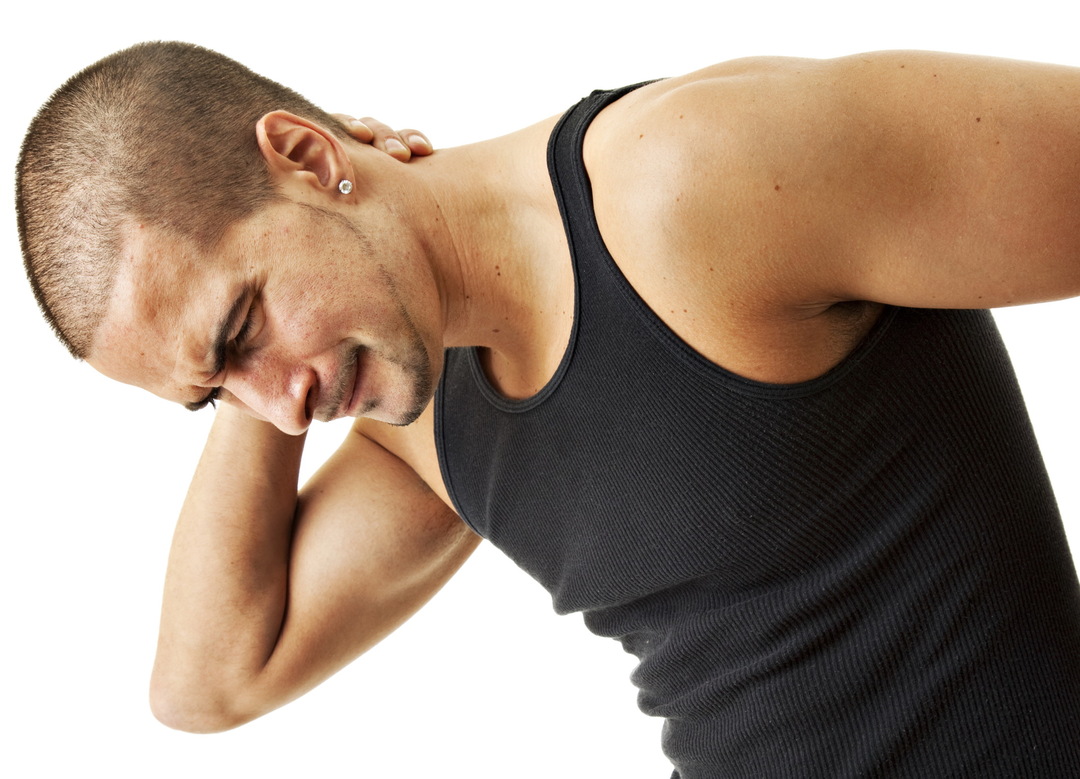 Osteochondrosis is most often observed in the cervical spine, which is due to the anatomical features of the structures of this department.First, the cervical vertebrae are located very tightly to each other.And secondly, the muscular skeleton of the neck is poorly developed.It is for these reasons that shearing of the cervical vertebrae and compression of the nerve roots and vessels are so easy.Much more often affected lower cervical vertebrae, rather than the upper.
Osteochondrosis is most often observed in the cervical spine, which is due to the anatomical features of the structures of this department.First, the cervical vertebrae are located very tightly to each other.And secondly, the muscular skeleton of the neck is poorly developed.It is for these reasons that shearing of the cervical vertebrae and compression of the nerve roots and vessels are so easy.Much more often affected lower cervical vertebrae, rather than the upper.
Symptoms of cervical osteochondrosis
Clinical symptoms of cervical osteochondrosis are extremely diverse.Many people do not even imagine how all sorts of symptoms( pain in the hands, dizziness, etc.), can be associated with the pathology of the neck. In general, all the symptoms that arise in cervical osteochondrosis can be considered within three syndromes:
- Compression-radicular syndromes;
- Irritative reflex syndromes;
- Syndrome of the vertebral artery.
Compression-radicular syndromes
In the background of cervical osteochondrosis, intervertebral hernias and spinal osteophytes can form.These structures compress the nerve roots, which leads to the appearance of symptoms of sciatica.Specific reflex, motor, and sensory disturbances are associated with the compression of each spine:
- When the spine C1 is compressed, pain occurs, as well as a sensitivity disorder( decreased sensation, numbness, tingling of the skin, a feeling of chills) in the parietal region;
- With compression of the spine C2 develop a pain, as well as a change in sensitivity in the parieto-occipital region of the head;
- When compressing the root of C3, pain is noted, as well as a change in sensitivity in the neck.In addition, a person may be disturbed by a sensation of swelling of the tongue on one side, difficulty in moving the tongue, speech disturbance.
- When compressing the root of C4, there are pains, as well as a change in sensitivity in the area of the clavicle.Hiccups and dysphonia may occur.Since the fibers of the diaphragmatic nerve pass through the spine, compression of the spine can lead to breathing disorders, pain in the heart area.
- When compressing the root of C5, pain develops in the shoulder, as well as changes in skin sensitivity along the outer surface of the shoulder.
- When compressing the root of C6, pain extends from the neck to the shoulder blade, as well as the outer surface of the shoulder, forearm, and to the thumb of the hand.There is a violation of skin sensitivity in this area.The biceps muscle is hypotrophic, the reflex is reduced.
- When compressing the root of C7, the pain from the neck extends under the scapula, on the outer-posterior surface of the shoulder, the forearm, and up to the ІІ-ІІІ fingers of the hand.There is a violation of skin sensitivity in this area.The triceps muscle is hypotrophic, the reflex is reduced.
- When compressing the spine of C8, the pain from the neck extends over the arm to the little finger.Dermal sensitivity in this area is disturbed.Appear hypotrophy and reduce the reflex from the triceps muscle.
The radicular syndrome is characterized by acute pain and its amplification when the head moves.
Irritative reflex syndromes
The early stages of osteochondrosis are characterized by the appearance of reflex syndromes. Cervical osteochondrosis may have the following variants of reflex syndromes:
- Cervicalgia is an intense aching neck pain that is most pronounced after waking up in the morning, as well as when turning the head, coughing and even laughing.
- Cervicocranialgia - pain concentrates in the neck and occiput.
- Cervicobrahialgia - pain in the neck, shoulder and forearm.
Cervicobrachialgia can occur with muscular-tonic, vegetative-vascular and neurodystrophic manifestations.Muscle-tonic syndromes are the result of a reflex muscle spasm. There are the following muscular-tonic syndromes:
- The syndrome of the lower oblique muscle - manifested by a constant aching pain in the neck and occiput on one side, significantly strengthened during head turns;
- Scapular-rib syndrome - manifested aching pain in the neck and upper corner of the scapula, giving into the shoulder or even the lateral surface of the chest.A characteristic sign is the intensification of pain in the process of pronation of the brush applied for the lower back.
Neurodystrophic syndromes include humeroparous periarthrosis, epicondylosis of the shoulder, shoulder-brush syndrome.
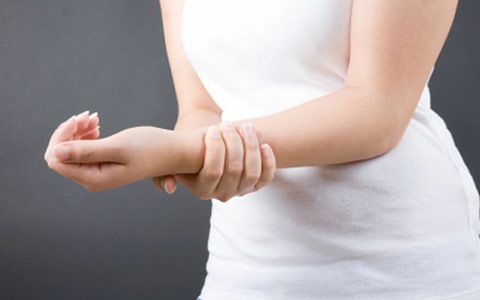 Shoulder-scrotal periarthrosis - characterized by pain in the shoulder joint, amplified when moving with the shoulder or raising the arm up.Pain is capable of radiating into the arm, neck.The skin in the shoulder region is edematous.
Shoulder-scrotal periarthrosis - characterized by pain in the shoulder joint, amplified when moving with the shoulder or raising the arm up.Pain is capable of radiating into the arm, neck.The skin in the shoulder region is edematous.
For shoulder-brush syndrome is characterized by the presence of signs of brachial periarthrosis in combination with vegetative-vascular, trophic changes in the field of wrist and hand.The skin of the brush becomes edematous, its color changes, the local temperature rises.
Epicondylosis of the shoulder is neurodystrophic changes in the area of the epicondyle of the shoulder, in the place where many muscles attach.It manifests as aching, constant pains in the supracondylar area, which are amplified by abrupt movements in the elbow or hand.
Spinal artery syndrome
The vertebral artery passes in the canal formed by the processes of the cervical vertebrae.The vessel provides blood supply to many structures of the brain.
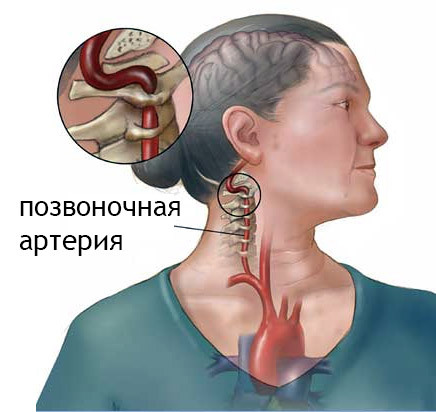
Narrowing of the vessel is possible both because of its reflex spasm and mechanical compression. When constricting the vessel, a vertebral artery syndrome is formed, which is characterized by the following symptoms:
- Cranialgia: aching, persistent headache is often one-sided, markedly worse with head movements.The pain spreads from the nape to the forehead.
- Tenderness of the scalp, determined by light touch, even when combing the hair.
- Cochleovestibular disorders: manifested by dizziness, tinnitus( ringing in the ears), hearing loss of mild degree, imbalance.
- Visual disorders: darkening, flashing of flies before the eyes.
- Neurasthenic syndrome: irritability, emotional lability, sleep disturbance.
- Vegetative symptoms: fever, chills, coldness of hands.
- Blood pressure fluctuations.
- When a vertebral artery is compressed by a sharp turn of the head, a person may lose consciousness.It is also possible such an option: a man falls like a wreck, but is in the mind.Such a violation is called drop-attacks.
Treatment of cervical osteochondrosis
It is very difficult to fight with osteochondrosis in neglected form.To eliminate the symptoms of the disease, various medications are used, which can be read in the article "Symptoms and treatment of osteochondrosis".No less significant role is played by therapeutic gymnastics, as well as physiotherapy and massage.In some cases it is very useful to wear a special collar.
The folk remedies will help to supplement the treatment.
Recommended:Wearing the neck collar
Wearing a collar helps to relieve muscle tension from the neck, and also gives the correct position to the spine, thereby eliminating the compression of the vertebral artery and nerve roots.Neck collars are hard( the collar of Shantz), as well as inflatable.
The collar of Shantz is a dense frame that fastens on the neck.He takes on the entire weight of the head, thereby relaxing the strained muscles of the neck.
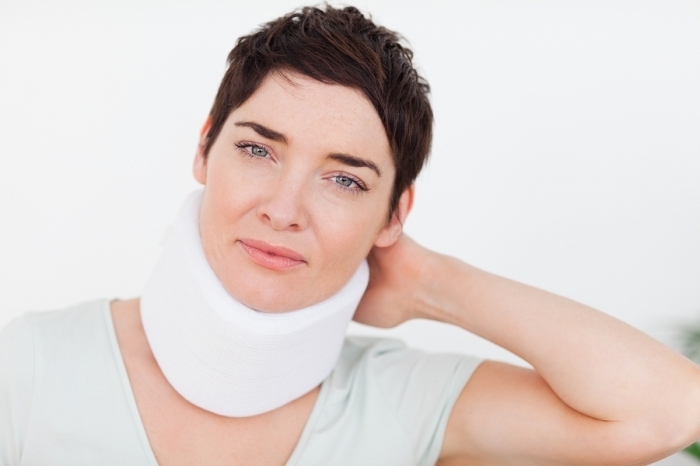
Inflatable collars are a device that must be put on the neck, and then with the attached pear to inject air.The inflated collar stretches the spine.
The collar is worn not all day, but several hours a day.On average, the duration of wearing the device is a month.
Please note: requires the use of a collar by a physician.Do not wear it on your own without the doctor's order.In some cases, the collar can squeeze the vessels and nerves, which can provoke serious consequences.
Exercises for cervical osteochondrosis
Medical gymnastics is recommended for all patients with osteochondrosis in the absence of contraindications.Exercise during physical exacerbations of the disease is contraindicated.Therapeutic gymnastics can be done after the pain subsides.Regular exercise allows you to strengthen the muscular frame, as well as reduce the burden on the intervertebral discs.Regular physical activity contributes to the improvement of blood supply in the neck and as a result of the normalization of metabolic processes occurring in the intervertebral discs.
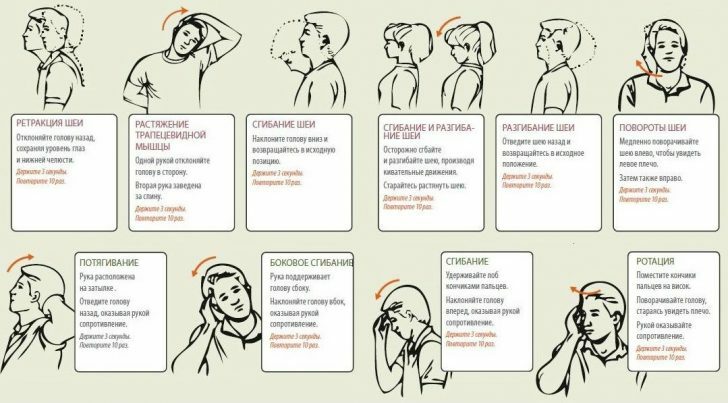
Exemplary set of exercises for cervical osteochondrosis:
- Sit on a chair.Alternately turn your head to the right and left.
- Tilt your head down, touching the thoracic cavity.
- Pull your neck back, while pulling your chin.
- Put your palm on the forehead and press it, it is important to tilt your head forward, resisting.
- The palm should alternately be applied to the temples and, just like in the previous exercise, the hand should resist the movement of the head.
- Maximize your shoulders, count to ten.Then lower your shoulders and relax.After ten seconds, do the same manipulation.
All exercises must be repeated ten times.
Grigorova Valeria, medical reviewer

